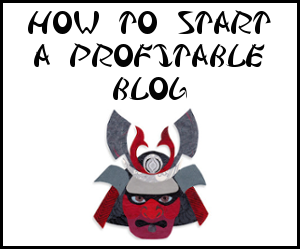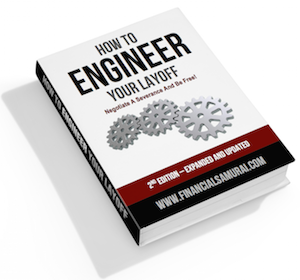Summer driving is in full effect and Yakezie Member Edward Antrobus and roadside flagger would like to share his safety tips across construction zones.
What do flaggers do for fun in their free time? Trick question. We don’t have free time. In the summer, it isn’t uncommon to work 70 hours or more per week without even a weekend off. In an informal poll, it was revealed that 9 out of 10 people in my company use their off-time to catch up on missed sleep. What drives a person to work those kinds of hours? It certainly isn’t the money. I make less than $10/hour on most projects. The people who stay in traffic control do it to help people. We do it to keep you safe when on the road. But we need your help. To keep you safe, you have to work with us. To keep you safe, you can’t be a cone-head.
What is a conehead? I’m not referring to the alien species from the Dan Akroyd movie. To a flagger, conehead is a play on the popular Gen X insult “bonehead.” It can also be taken to mean someone who isn’t paying attention and drives over a traffic cones, which is sometimes referred to as “wearing a cone.”
What does it take to not be a conehead in a road work zone?
* Slow down. To start off, slow down. Imagine you were driving somewhere new. You don’t have a GPS, or a map. Just some directions which you weren’t able to review before setting off. As you were driving through this new area, would you go zipping along at full speed, or would you take it slow so you can pick out the right street sign and not miss your turn? In road construction, every day is a new road.
It doesn’t matter if you have been driving down that same stretch of road every day for the last 5 years. Today, that road is different. Maybe traffic is shifted over into the shoulder, or into a lane normally reserved for the opposite direction. Maybe you can’t turn down a side road. Maybe only one lane is available for both directions and you need to take turns. It isn’t the same road as it was yesterday, and not the same road it will be tomorrow. Take it slow so you can be prepared for any surprises.
* Follow directions. There will be signs, flaggers, and devices (like cones) out there that point out the safe way through all of the confusion in a work zone. There is an order to the priority in which these should be followed if they happen to conflict. At the lowest priority is the striping on the road. Road construction will almost always over-rule these lines at one point or another. Next are the signs. If a road looks open, but there is a sign that says you cannot turn there, don’t turn!
Next in priority are traffic control devices such as cones, barrels, and barricades. Cones and barrels are called channelizing devices because they are used to create a path or channel through which traffic is supposed to flow. General rule of thumb: whatever side of your vehicle the cones start on, that is the side they should end on. If the first cone you pass is on the left, the last cone should be on the left as well. Note: This isn’t always the case. Sometimes, there will be a “snake” in which you are pushed to the opposite side of the road from the side you were originally put on. This will always be accomplished with a diagonal line of cones pointing out the direction to turn. Without that line, don’t switch to the other side of the cones, or you’ll be a conehead!
The final priority is a flagger. A flagger can overrule any of these, as the situation is warranted. In fact, the flagger can temporarily over-rule any traffic pattern or movement, except for a red light. Only a police officer can send traffic through a red light.
* Don’t follow the leader. Last weekend, I was involved in a project in which an interstate highway was shut down. However, tractor trailers still needed to enter the highway to load materials being removed from the work zone. At one point, over 30 cars followed a tractor trailer into the closed highway, which at that point was littered with dangers from a collapsed bridge. One of the worst things you can do while driving in road construction, or anywhere, is blindly following the vehicle in front of you. That is a true coneheaded move.
One car can make a mistake. There will always be drivers who simply refuse to read signs or pay attention to changing conditions. But don’t follow their mistake. Do you want to risk ruining your car, hitting an unsuspecting construction worker, or getting killed yourself because you assumed the driver in front of you knows what they are doing?
I wish I could say that was a rare occurrence. But situations like that happen every day in every work zone in America. Aside from not blindly following the car in front of you, I have one last safety tip on this: never follow a vehicle with flashing lights.
Flashing lights could mean the hazard warning lights (commonly called four-ways) equipped with every vehicle or a strobe light on the roof (or hidden in with the headlights). Emergency vehicles have blue and red strobe lights, but construction vehicles will have yellow or white strobe lights. In either case, don’t follow them! If a vehicle is part of the work crew, it could be going in and out of the closed lane. Following will lead to you being in the wrong place. Even worse, when a tractor trailer pulls into a closed lane, its next step is usually to back up. Semi’s have huge rear blind spots. If you pull into another lane directly behind a semi with its hazard lights, you could find it backing up straight into you.
Despite everything I can do at my job, the number one piece of safety equipment on the road is you. Only you can control your actions, and only you can pay attention to changing conditions. Only you can truly keep yourself safe.
Readers, my plea to you is that you help spread this message to your friends and family. Anyone can be a conehead without even realizing it! Let’s help keep everyone safe on the road this summer. I’ve been working for a while to keep people informed about safe habits in construction. What can I do differently to get the word out?





Recently, I saw a California Highway Patrol survey stop on the streets . I do not know what it was for, but I decided not to go down that street. The typical stop is usually during holidays when too much celebrating may occur. It can be scary to try to cut down on driving and drinking with just a few cones to protect the police. There have been workers killed on the freeway where there are construction occurring with cones.Thanks for the perspective!
Standing out there is scary enough with all of the advanced warning, reduced speed limits and long lines of large cones. I can’t imagine how the police stand out there with just three small cones and some flashing lights.
Edward, you ever seen anything really bad happen where a driver was going too fast or not paying attention? I wonder what type of insurance policies both sides have and who is responsible? Thanks for the warning.
The worst that I have personally seen was a group of college students who didn’t pay attention to the signs and drive straight off a 6″ drop-off and broke am axle.
But on a job site adjacent to mine, there was a fatality last year when a guy drove into a lane with incoming traffic.
I totally agree about slowing down. Anytime I see people where I’m driving, my natural instinct to slow down kicks in even if there aren’t road signs. That’s a good point too about not assuming the person in front of you is paying attention and not to follow them blindly. In addition we really need people to put away their phones even if their state doesn’t have cell phone laws. Drivers have no business texting and talking on the phone, even hands free. It’s too dangerous.
The flip side of slowing down when you see construction signs but no people is a good idea as well.
Cell phone usage while driving is probably the biggest danger on the road today.